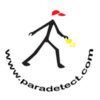
Anthropological Views on Healing Chemical Imbalance Diagnostics
 If you have been diagnosed with a chemical imbalance and have been prescribed any psychiatric medication such as Prozac, Paxil, Zoloft, xanax or many others, read this article carefully while you still can stop it.
If you have been diagnosed with a chemical imbalance and have been prescribed any psychiatric medication such as Prozac, Paxil, Zoloft, xanax or many others, read this article carefully while you still can stop it.
The chemical imbalance theory implies that our minds have fixed amounts of a list of defined chemicals as normal levels.
Common medical understanding tends to believe such physical malfunction may be fixed using drugs/surgery etc. But even before the related drug revolution, it was obvious to pioneering scientists that this implication is far from accurate.
These chemicals have similar structures to popular medications, and changes in the levels of such chemicals have dramatic effects on how our body operates.
Such chemicals can influence our state of mind, while our state of mind can also influence our neural chemistry. Drugs that make us euphoric either directly or indirectly stimulate the same receptors that get stimulated when we are naturally euphoric.
It is accept that psychoactive medications may help the mentally ill, yet it is undeniable that profound learning can do the same.
The physical detection of the level of these chemicals can only be done in case of death, since it involves brain autopsy to achieve that which in this case results may be influenced by the cause of death.
There are millions upon millions of neurons laboring in the brain, each of which having a unique function. amounting to the most complex system known to mankind.
The only scientific evidence supporting the “chemical imbalance” theory is the clinical trials of these drugs.
 By getting addicted to any anti/depressant medication currently in the market does not address the problem of chemical imbalance. Not mentioning, the withdrawal symptoms which will certainly cause a temporary chemical imbalance by itself, it might even create an unforeseen mental or physical problems.
By getting addicted to any anti/depressant medication currently in the market does not address the problem of chemical imbalance. Not mentioning, the withdrawal symptoms which will certainly cause a temporary chemical imbalance by itself, it might even create an unforeseen mental or physical problems.
Progressively, medication will eventually succeed in altering neurotransmitter levels in each part of the brain at particular times. But to be able to respond directly to the changing needs per individual is another story.
The mind is the only tool qualified to do that.
That leads Paradetect to believe that meditational trances may actually be the safest if not the only method to heal chemical imbalance and depression cases.
Here is what Carol Laderman had to say about this subject.
Adam El Masri


Trances That Heal: Rites, Rituals and Brain Chemicals
By: Carol Laderman
Professor Carol Laderman received her Ph.D. in Anthropology. Professor Laderman’s primary research interests are Southeast Asia, medical anthropology, nutrition, reproduction, and sex roles.
She applied the latest research in brain chemistry to trance states in her article; below there are segments of her findings.
She speaks of a shaman healer she researched in Malaysia, and she concludes that his method successfully heals some chemical imbalance cases that she witnessed while researching him.
Pak Long Awang is a powerful healer.
I first witnessed his power at work while doing anthropological research in a small Malaysian village.
Here, against a backdrop of flickering oil lamps in an atmosphere redolent of a resin used as incense, Pak Long serves as the local version of a country doctor. He treats aches and pains that he diagnoses as “wind sickness” by inducing a deep trance the Malays call “forgetfulness”.
Pak Long healing trances may work their apparent magic by actually altering the levels of brain endorphins—the body’s natural opiates—in his patients. These endorphins, produced by every human in response to certain extreme situations, may be a link between the trance ceremonies of the East Indies and the most sophisticated neurochemistry laboratories in the West.
I attended healing ceremonies with growing regularity.
One day, I sat beside him on the pandanus mat, Pak Long signaled the assembled musicians to start the music that accompanies the transition to “forgetfulness” As the drums and gongs set up their steady rhythm.
For a moment I hesitated, and then decided to submit to trance. As the vibrations of the drums and gongs entered my body, my eyes seemed to glaze over. As the music became louder my mouth opened, trembling uncontrollably. I began to feel cold winds blowing inside my chest, winds that increased in intensity, as the music swelled and accelerated until it felt as if a hurricane was raging within my heart. I put my hands on my chest to try to calm it, but instead I began to move my shoulders and then the whole upper part of my body as if I were about to get up and dance. With the last vestiges of my self-control, I prevented myself; I still feared embarrassment. But as the music swelled to a climax, I began to move my head so quickly and violently that, had I not been in trance, my neck would undoubtedly have snapped.
The music stopped abruptly. Instantly, I stopped shaking my head and sank to the floor. Pak Long began reciting spells to bring me out of trance. I came out very quickly, literally as though a spell had been broken. I felt good; the only aftereffect was a slight pain in my stomach.
Most Western scientists have a different perspective on the trance experience. Trance is achieved through cultural cues: ritual props, incantations, songs and stories. Percussive music, a steady, musical pulse, is especially important in the transition to altered states in cultures throughout the world. The most effective rhythm is four beats per second, which is exactly the optimum frequency for pain relief through electrically stimulated acupuncture. What’s more, it matches the EEG frequency of theta waves, which are produced by the brain during periods of deep meditation but appear only rarely in a normal waking state. English faith healers have been shown to produce continuous theta waves in their patients by the laying-on of hands, and the patient’s theta waves exactly match the pattern of the faith healers.
A more important key may be found in the biochemistry of endorphins. Endorphins (the name is a contraction of “endogenous morphine like substances”} are substances that act on the nervous system, and are generated in the human brain in response to pain, stress or certain kinds of “peak experience.” It may be that they are also generated in response to a belief.
The ability of the body to heal in response to belief has long been recognized. Physicians regularly administer placebos, pharmacologically inert substances, in circumstances that don’t indicate an active medication. The patient believes he has been given effective medication and, in response to this belief, he recovers. On theory is that his body produces chemicals perhaps endorphins that alleviate his ailments. Placebos have been used to control postoperative pain, relieve anxiety, and to cure warts and peptic ulcers.
Endorphins may have evolved in order to protect and preserve our species in its struggle for survival. Pain normally serves as a signal to alert the body that something is amiss. But when pain becomes excessive or too prolonged, it becomes destructive; neurohormones can take over to relieve the pain, sometimes even producing feelings of euphoria. In pregnant women, for instance, endorphin production increases during the last trimester and reaches a peak late in labor. This helps account for the pleasure with which some women remember natural childbirth; endorphins have reduced both the pain and the memory of it.
Nor are endorphins the only chemicals the brain produces. Given the right cues, it will generate tranquilizers as effective as Librium or Valium. A growing number of scientists, from biochemists and pharmacologists to psychiatrists, psychologists and anthropologists, have speculated that somehow shamans like Pak Long have hit on ingenious methods for turning on production of the brain’s natural chemicals. This involves a subtle appreciation of the patient’s psychological, as well as his physical, problems.
The most striking aspect of the shamans’ trances is that they work sometimes when Western medicine fails.
The Mind-Body Connection
The Western interpretation of the shaman’s power lies in the growing appreciation of the mind-body connection. Psychosomatic illnesses may have their origins in the mind. But once physical symptoms appear, they are quite real and not “all in the mind.” We are discovering that the biochemical changes the mind produces can ravage the body just as a virus or a drug can. In fact, Dr. Raymond Prince of McGill University, a pioneer in the field of Trans/cultural psychiatry, has gone so far as to say that psychiatrists who don’t recognize the interaction of mind and body should be known as “former psychiatrists.” Malay shamans, it seems, have always inhabited the frontier that Western scientists are just beginning to explore. And they have had companies with major laboratory research centers.
There is good evidence to suggest that cultures and cults around the world have long exploited the brain-body link to produce altered states of consciousness without using drugs. The Salish Indians of Canada hold a Winter Spirit Dance designed to help a man achieve the kind of visionary experience that brings power in the form of a tutelary spirit. But the dance is also used to treat “spirit illness,” a conditional characterized by depression and often connected with drug and alcohol abuse.
Missing Link
Unfortunately, objective proof of a link between ecstatic states and endorphins is difficult to obtain. Lumbar punctures, standard procedure in neurology clinics to obtain spiral fluid for chemical analysis, are too risky in the field. My make-shift blood-refrigeration methods are inadequate for preserving the blood samples until laboratory analysis can detect the unstable chemicals. And even if these problems were solved, we don’t really know exactly which chemicals are likely to be the most significant in a shaman’s cures. We could block endorphin production with naloxone, a morphine antagonist that also interferes with the action of endorphins. But if the experiment were a success and a patient failed to achieve trance, then the healing ritual would be a failure, and a traumatic one at that.
Sadly, we may never discover the exact biochemical components of the shaman’s cures, but there is no doubt that by opening the floodgates of emotion he can exorcise the demons of disease.
Paradetect Team




